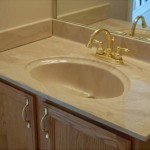How To Get Rid Of Mould On Bathroom Grout
Mould growth on bathroom grout is a common household problem, primarily due to the consistently damp and humid environment. The porous nature of grout makes it particularly susceptible to absorbing moisture, creating an ideal breeding ground for mould and mildew. Addressing this issue promptly is crucial, not only for aesthetic reasons but also for maintaining a healthy living environment. Mould can trigger allergic reactions, respiratory problems, and other health concerns, especially in individuals with pre-existing conditions.
Effective mould removal requires a combination of appropriate cleaning agents, tools, and techniques. Ignoring mould growth can lead to its proliferation, potentially causing damage to building materials and exacerbating health risks. This article outlines various strategies for removing mould from bathroom grout, emphasizing both immediate remediation and preventative measures to minimize future occurrences.
Identifying Mould and Mildew
Before embarking on any mould removal process, it is essential to accurately identify the substance present. Mould and mildew are both types of fungi that thrive in damp environments, but they differ in appearance and severity. Mildew typically appears as a white or grey powdery substance on the surface of materials, while mould often presents as black, green, brown, or other colored patches that penetrate deeper into the grout.
Mildew is generally easier to remove than mould and can often be addressed with basic cleaning solutions. Mould, on the other hand, requires more aggressive cleaning methods and, in severe cases, professional remediation. Visually inspecting the affected areas, noting the color and texture of the growth, and identifying any accompanying odor can help determine the extent of the problem and the appropriate course of action. If there is extensive mould covering a large area, then air quality testing with a professional company is recommended.
Furthermore, it is important to consider the potential health implications of mould exposure. Individuals with allergies, asthma, or weakened immune systems may experience more pronounced symptoms upon exposure to mould spores. In such cases, it is advisable to wear protective gear, such as masks and gloves, during the cleaning process and to ensure proper ventilation in the affected area.
Effective Cleaning Solutions
Numerous cleaning solutions are available for tackling mould on bathroom grout, ranging from readily available household products to specialized mould removal agents. The choice of solution depends on the severity of the mould growth and the type of grout material. Always test the cleaning solution on a small, inconspicuous area first to ensure it does not discolor or damage the grout.
One common and effective solution is a mixture of bleach and water. A ratio of one part bleach to ten parts water is generally recommended. Apply the solution to the affected grout, let it sit for several minutes, and then scrub with a stiff-bristled brush. Rinse thoroughly with water and ensure the area is well-ventilated. It is crucial to wear gloves and eye protection when working with bleach, as it can be irritating to the skin and eyes. Avoid mixing bleach with ammonia or other cleaning agents, as this can create toxic fumes.
Another popular option is white vinegar. Vinegar is a natural disinfectant and fungicide that can effectively kill mould. Spray undiluted white vinegar onto the grout, let it sit for at least an hour, and then scrub with a brush. Rinse with water and dry the area. Vinegar is a milder alternative to bleach and is less likely to cause discoloration or damage to the grout.
Baking soda is another versatile cleaning agent that can be used to remove mould. Create a paste of baking soda and water, apply it to the grout, and let it sit for several minutes. Scrub with a brush and rinse with water. Baking soda is a gentle abrasive that can help remove surface mould without damaging the grout.
For more stubborn mould growth, commercial mould and mildew removers are available. These products typically contain stronger chemicals designed to kill mould and prevent its regrowth. Always follow the manufacturer's instructions carefully when using these products, and ensure proper ventilation.
Hydrogen peroxide is another effective solution against mould. Apply a 3% hydrogen peroxide solution to the affected grout, let it sit for 10-15 minutes, then scrub and rinse with water.
Regardless of the cleaning solution used, thorough rinsing is essential to remove any residue and prevent further mould growth. After cleaning, drying the area completely is crucial to inhibit future mould formation.
Step-by-Step Cleaning Process
A systematic approach to cleaning mould on bathroom grout ensures thorough removal and minimizes the risk of re-growth. The following steps outline a recommended cleaning process:
- Preparation: Gather the necessary cleaning supplies, including the chosen cleaning solution, a stiff-bristled brush (a grout brush is ideal), gloves, eye protection, and a spray bottle (if applicable). Ensure adequate ventilation in the bathroom by opening windows or turning on the exhaust fan.
- Application: Apply the cleaning solution to the affected grout. If using a spray bottle, spray the solution directly onto the grout. If using a paste or liquid, apply it with a brush or sponge. Allow the solution to sit on the grout for the recommended time, typically 5-15 minutes, depending on the severity of the mould growth and the type of cleaning solution used.
- Scrubbing: Using a stiff-bristled brush, scrub the grout vigorously to remove the mould. Pay particular attention to areas with heavy mould growth. For stubborn mould, you may need to repeat the application and scrubbing process.
- Rinsing: Rinse the grout thoroughly with clean water to remove any cleaning solution residue. Use a sponge or cloth to wipe away excess water.
- Drying: Dry the grout completely. Use a clean towel or cloth to wipe down the area. Alternatively, you can use a fan or dehumidifier to speed up the drying process. Ensure the grout is completely dry to prevent future mould growth.
- Repeat if necessary: For extensive mould, repeat steps 2-5 until you are satisfied that the majority of mould deposits have been removed.
If the mould growth persists despite repeated cleaning attempts, it may be necessary to consider more drastic measures, such as replacing the grout. This is particularly relevant if the grout is severely damaged or porous, making it difficult to remove the mould completely.
Preventative Measures
Preventing mould growth is just as important as removing it. Implementing preventative measures can significantly reduce the likelihood of mould returning to bathroom grout. The cornerstone of mould prevention is controlling moisture levels.
Adequate ventilation is crucial. Ensure the bathroom is well-ventilated by opening windows or using the exhaust fan during and after showers or baths. This helps to remove excess moisture from the air and prevent it from condensing on surfaces.
Regular cleaning of the bathroom surfaces, including the grout, can help prevent mould growth. Wipe down walls and floors after showers to remove excess water. Consider using a squeegee to remove water from shower doors and walls.
Repair any leaks promptly. Leaky faucets, showerheads, or pipes can create a constant source of moisture, promoting mould growth. Address any plumbing issues immediately to prevent further damage.
Consider using a mould-resistant sealant on the grout. These sealants create a barrier that prevents water from penetrating the grout, reducing the risk of mould growth. Reapply the sealant periodically, as recommended by the manufacturer.
Maintain a consistent temperature in the bathroom. Fluctuations in temperature can lead to condensation, which contributes to mould growth. Heating the bathroom during colder months can help to minimize condensation.
Avoid storing wet towels or clothing in the bathroom. These items can trap moisture and create a damp environment conducive to mould growth. Hang towels and clothing in a well-ventilated area to dry.
Consider using mould-resistant paint on the bathroom walls and ceiling. These paints contain fungicides that inhibit mould growth. This is especially useful if you have recurring issues with mould in these areas.
Regular inspections can help identify and address potential mould problems early on. Periodically check the bathroom for signs of mould growth, such as discoloration, musty odors, or dampness. Addressing these issues promptly can prevent them from escalating into more significant problems.
Controlling humidity is one of the most important steps to prevent mould. A dehumidifier can be used to remove moisture from the air, especially in bathrooms that lack adequate ventilation.
Dealing with Stubborn Mould and When to Call a Professional
In some cases, mould growth may be particularly stubborn and difficult to remove with standard cleaning methods. This can occur when the mould has penetrated deep into the grout or when the mould is particularly resistant to cleaning agents. If repeated cleaning attempts fail to remove the mould completely, it may be necessary to consider more aggressive solutions or seek professional help.
One option is to use a steam cleaner. Steam cleaners use high-temperature steam to kill mould and loosen it from the grout. This can be an effective way to remove stubborn mould without using harsh chemicals. However, it is important to exercise caution when using a steam cleaner, as it can damage certain types of grout or tiles.
Another option is to use a specialized mould removal product designed for use on grout. These products often contain stronger chemicals than household cleaning solutions and may be more effective at killing mould. However, it is important to follow the manufacturer's instructions carefully and to wear appropriate protective gear when using these products.
In severe cases, it may be necessary to remove and replace the grout. This is a more labor-intensive process, but it can be the most effective way to eliminate mould completely. If you are not comfortable performing this task yourself, it is best to hire a professional.
Knowing when to call a professional for mould remediation is crucial. If the mould infestation is extensive (covering more than 10 square feet), if you suspect the mould is toxic (such as black mould), or if you experience health problems related to mould exposure, it is best to consult a professional mould remediation service.
Professional mould remediation companies have the expertise, equipment, and training to safely and effectively remove mould from your home. They can also identify the source of the moisture problem and implement measures to prevent future mould growth. While professional mould remediation can be costly, it is often the best option for ensuring the health and safety of your home and family.
When selecting a mould remediation company, it is important to choose a reputable and experienced provider. Check their credentials, licenses, and insurance, and ask for references. Ensure they follow industry best practices and use safe and effective mould removal techniques.

How To Clean Mold In Shower Grout Tips And Tricks Certified Care

Black Mold In The Shower How To Clean It Kitchen With Matt

How Do I Remove Black Mould From Shower Floor

How Can I Clean Mildew From Grout Puroclean Hq

How To Remove Mold From Shower Caulk Or Tile Grout Fabulously Clean

Cleaning Mrs Hinch Fans Share Easy Ways To Clean Tile Grout Express Co

How To Clean Grout Cleaning Stains

The Top 4 Causes Of Bathroom Mould How To Get Rid It

Is There A Way To Remove Mold From Grout Hometalk

Kill Bathroom Mould Without Bleach Electrodry Blogs
Related Posts







